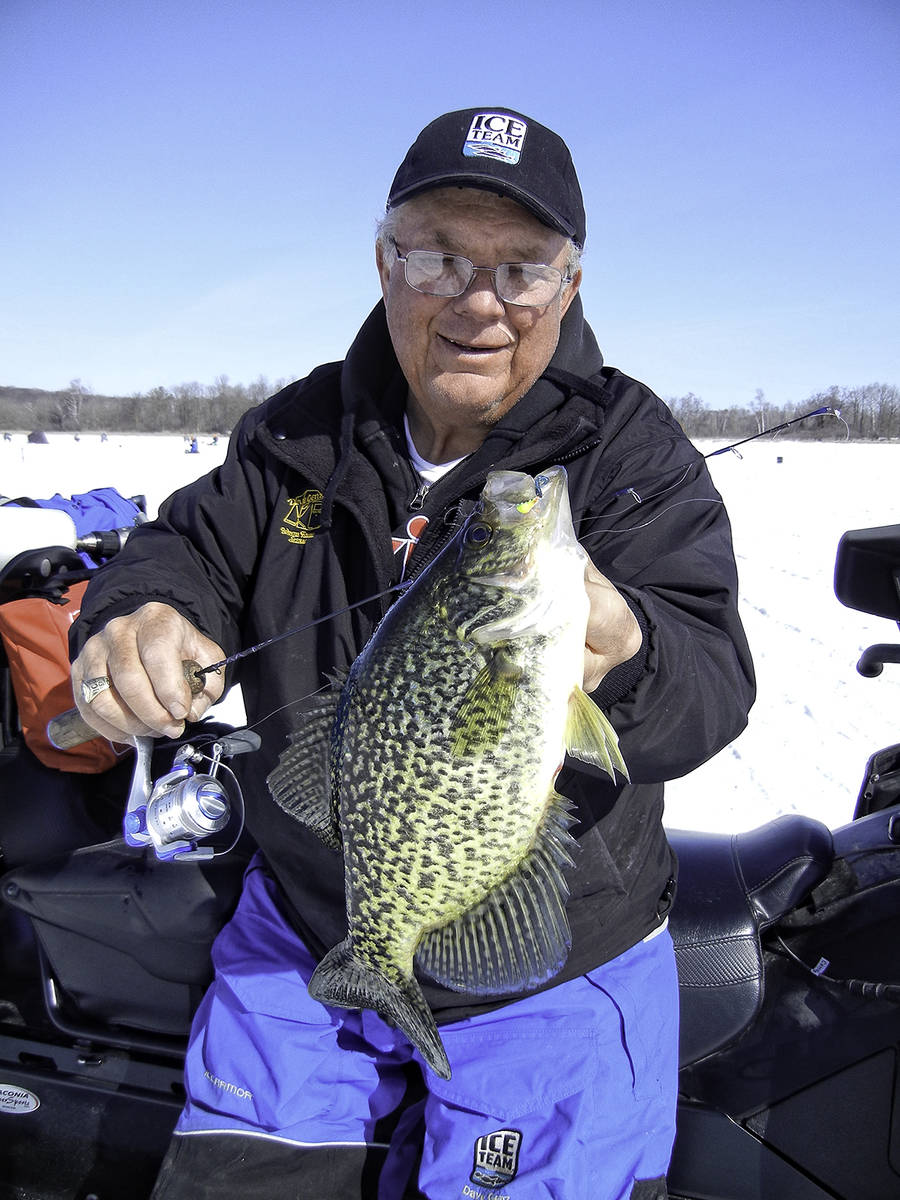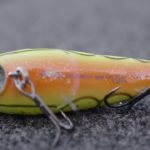Soft as a Baby Insect’s Bottom – Plastics in Modern Ice Fishing, Part 1
Some of what you’re about to hear, if you have followed Dave Genz and his ice fishing beliefs, might not sound like the father of modern ice fishing. He’s finding a soft spot in his heart for soft plastics.
This from a guy who has come right out and said, “I’m a live bait fisherman.”
 Genz’s belief system comes from what he sees and catches while out there on the ice – almost every day, all winter long, on an annual tour that stretches east and west, from the southern fringes of the Ice Belt to the True North. You can’t blame somebody for developing confidence in fresh maggots barely pierced through the fat end so clear juices stream from them and they wiggle on the hook. Fish readily eat such things, and they haven’t stopped eating them just because Genz believes more strongly in soft plastics.
Genz’s belief system comes from what he sees and catches while out there on the ice – almost every day, all winter long, on an annual tour that stretches east and west, from the southern fringes of the Ice Belt to the True North. You can’t blame somebody for developing confidence in fresh maggots barely pierced through the fat end so clear juices stream from them and they wiggle on the hook. Fish readily eat such things, and they haven’t stopped eating them just because Genz believes more strongly in soft plastics.
No, the evolution of Dave’s take on plastics says more about his open mind, inquisitive nature, and the development of materials and processes being used to make the latest, more realistic fakes.
Here’s the story of how all this came about.
Actually, it was the combination of Genz’s wide travels and time spent observing good anglers using the latest plastics that popped his eyes open to the possibilities. In addition to his own fishing, Dave attends a lot of top-shelf ice fishing competitions, often as the weigh-in emcee. Rather than sit in the trailer all day, he tools around on his snowmobile and studies the anglers. He knows them and they know him, and there is a continuous conversation going on.
“Spending the last 20 years around these tournament fishermen,” says Genz, “is what made me realize that during these tournaments, you usually don’t have the luxury of moving 10 feet away and drilling a new hole to look for biters. It gets crowded out there on the good spots.
“When these guys are restricted to staying in one place and trying to get those fish to bite, a lot of them put down a piece of plastic. These are the same fish that didn’t bite the lure they had down there, that was baited with live bait.
“Color becomes much more important (when using plastics and trying to tempt the same fish), along with the speed of your movements, and the shape of the plastic. You might drop something down and bang, you catch one. Then it slows back down and you have to continue to go through your arsenal.”
All the old rules still apply, such as hoping you can get over a good hole, the edges of the best cover, the place fish most want to be at the moment. And waiting for the magic hour when light levels drop and the sun hits the tops of the trees. But, it’s hard to ignore when good fishermen pluck reluctant fish using this plastics approach, right in the middle of the day. They try things and find what works, because they don’t have the luxury of waiting for the sunset. Weigh-in is completed long before sunset.
While it’s true that the modern ice fishing revolution began and was driven from the center of the country, the East Coast, in many respects, has been the incubator for much recent soft plastic innovation. One guy Genz regularly comes across on his trips to the eastern states (and at other tourney venues) is Scott Brauer, an industrial arts teacher from New York with a passion for ice fishing. Brauer fishes in competitions, and his Maki soft plastic baits are used by a large percentage of tournament anglers. Talking to Scott is what clued me in to how far the materials had come,” said Genz. “I spent time learning from him, and saw how they were able to take the latest materials and infuse colors, even glow colors, and turn them into shapes that behave more like real things in the water.”
Indeed, the movement of today’s plastics is a big part of their appeal. Seeming to react to essentially no movement on your part, they undulate in the water almost like marabou. They can be shifted around by subtle underwater currents. As long as the jig they’re connected to is lightweight and well balanced, the plastics can react and flow even when fish softly blow on them or half-heartedly suck at them. This is a big deal, something we’ll talk more about next time.
The performance characteristics of modern soft plastics are made possible by how soft and supple the materials are and the sophisticated processes used to create intricate shapes. And that same factor, softness, accounts for fish holding onto them after giving them the initial sampling test. A fish’s life is a continuous cycle of choosing what to eat and what to reject, from among all the stuff that’s crawling and swimming around down there. The latest plastics are impressive when it comes to representing what fish are currently feeding on, then passing that crucial touch test. Which brings us to another East Coast angler, Jamie Vladyka. Genz credits Vladyka for helping him view the use of plastics for ice fishing as a different matter than using those same baits in open water.
“The light bulb (about how and when to use plastics) went on with me last year,” remembers Genz, talking winter 2012-13, “when I was out there with Jamie. I had always worked hard to thread plastics on perfectly straight, so they hung outward, horizontally (parallel to the hook shank). But we learned that from fishing them in the summer, when we cast it out and wind it back in. That’s how plastics look best when you’re fishing that way.
“In the winter, you drop it straight down the hole, so the movement is more up and down than across. The only ‘across’ we get is by the size of the hole. Jamie got me hooking the plastics so they’re tails up or tails down, so when you work it, it looks more like it’s swimming or kicking up or down. It’s more realistic than having it swim around in circles down there. It was Jamie who put that thought in my head.”
Really interesting stuff, and enough to get your head swimming around in circles. Next time, we’ll bring Jamie into the conversation and get his detailed take on how he presents plastics.
Note: Dave Genz, known as Mr. Ice Fishing, was the primary driver of the modern ice fishing revolution. He has been enshrined in the National Fresh Water Fishing Hall of Fame and Minnesota Fishing Hall of Fame for his contributions to the sport. For more fishing tips and to order his new info-packed book, Ice Revolution, go to www.davegenz.com.





